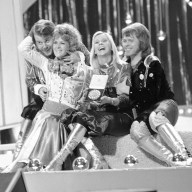 After “A Hard Day’s Night,” the Beatles returned to screens in “Help!”
After “A Hard Day’s Night,” the Beatles returned to screens in “Help!”
Credit: Provided
It was 50 years ago Sunday that the Beatles made their “Ed Sullivan Show” debut. Seven months later American cinemas received “A Hard Day’s Night,” the first movie starring the Fab Four. Today we tend to ignore pop music pictures. No one takes Justin Bieber films or One Direction movies, even the ones directed by Morgan Spurlock, seriously. Their releases are occasions for critics to take revenge on being tortured by a section of pop culture not remotely meant for them.
Very few probably thought to take “A Hard Day’s Night” seriously, either. But it was, as has been breathlessly asserted since, groundbreaking. Its director, Richard Lester, wasn’t really the father of MTV, as many have claimed. (Upon receiving a special MTV award that proclaimed him as such, Lester semi-jokingly asked for a blood test.) Music films have existed since the advent of synch-sound in the 1920s. “A Hard Day’s Night”‘s music set pieces were certainly among the fastest up till that point, the editing — and the actual invention of the content in the images — in lock-step, so to speak, with the raucous, English, boy band twist on rock ‘n’ roll.
“A Hard Day’s Night” is a masterpiece — freewheeling, witty, absurdist and often screamingly funny. (It’s also a lie, which is fine. If it’s the real Beatles you want — the ones who smoked, played cards and grumbled a lot — check out “What’s Happening! The Beatles in the USA,” directed by legendary “Salesman” and “Grey Gardens” documentarians David and Albert Maysles, which in a way offers the realistic flip-side of “A Hard Day’s Night.”)
But it’s not as brilliant, arguably, as their next film. The year after “A Hard Day’s Night,” the Beatles were back on screens, with director Richard Lester in tow, with “Help!” It was, of course, bigger. Like a Bond film — which it sometimes parodied — it trotted around the globe. The locations (the Alps, the Bahamas, Stonehenge) were picked by whether John, Paul, George and Ringo wanted to go there. It was also in color.
“Help!” has generally been perceived as inferior to “A Hard Day’s Night.” It was less vital. It didn’t have that shot to the arm that comes with that opening chord with which “A Hard Day’s Night” explodes onto the screen. The Beatles were even less present in it, in part because they had discovered marijuana and were constantly, visibly stoned. (One story recounted on “The Beatles Anthology” has Paul and George running from an explosion. They kept running, and running, and running and, finally out of distance from everyone, they smoked a joint then headed back.)
But bigger and splashier — and drugged-up — doesn’t automatically mean lesser. “A Hard Day’s Night” is funny, but “Help!” is deeply, weirdly strange. In one of the most celebrated moments in “A Hard Day’s Night,” the Beatles argue with a stuffy, middle aged Englishman on a train. (“I fought the war for your type.” “I bet you’re sorry you won.”) They start taunting him and then at one point suddenly appear outside the train, running alongside it, yelling, “Mister, can we have our ball back?!” It’s an impossible moment, achievable only with cinema.
“Help!” is all that moment, only far sillier. The self-consciously nonsense plot has them pursued by a vaguely Eastern cult religion, who demand Ringo be executed because he was sent and has put on — and cannot remove — a sacrificial ring with a giant red ruby attached. They chase them all over the world, with pit stops at famous or at least picturesque locations.
It’s little more than a series of sketches, with songs gratuitously slipped in. (At least “A Hard Day’s Night” gave them the excuse of putting on a live TV show to bust out tunes.) But that makes it more a traditional musical, one where one needs little reason to burst into song. And freed from a location-specific plot, they go nuts — or at least their screenwriter does. Playwright Alun Owen wrote “A Hard Day’s Night,” but for “Help!,” Richard Lester reached out to Charles Wood, who was more into wordplay and general insanity. He’s a better fit for Lester than Owen, and “Help!” boasts dense verbal antics that push it beyond Bond movie pastiche into the realm of something stranger.
In fact, you can see in this film the germs for the type of post-modern comedy that would be built upon by the likes of Monty Python. George Harrison used to tell the Python troupe that whatever magic the Beatles had passed right over to them. (Harrison later produced some of their films and has a blink-and-you-miss-it one-line cameo in “Life of Brian.”) Often “Help!” feels like a dry run for “Monty Python’s Flying Circus,” and is sometimes — as in a nutty scene involving reverse hand-dryers in a bathroom; a bit where Paul is shrunk and nearly stepped-on; a machine that slows down reality but which keeps breaking — as funny and creative. The ending dedicates the film to Mr. Elias Howe, inventor of the Singer sewing machine.
That the Beatles were stoned probably helped; they’re chill enough that even cute little Paul does spot-on deadpan. Harrison, the best actor of the lot, murders all of his lines. Lennon, who hated much that was Beatlemania, seems more at home here than in “A Hard Day’s Night,” in part because the cooler-than-thou attitude struck by Lester and Wood seems right up his alley. (He would reunite with Lester for a supporting role in the deadly war satire “How I Won the War,” also written by Wood.)
“Help!” also finds both the Beatles and Lester maturing — not in a boring adult way but in terms of craft and depth. The songs in “A Hard Day’s Night” are blasts of euphoria, but the ones in “Help!” are more complex, even sneaky. The title song is a buoyant-sounding number whose lyrics talk about anxiety and desperation and loneliness — feelings Lennon was suffering from with his new super-fame. All the songs are about failure, heartbreak and neediness (like Harrison’s “I Need You”).
The content that surrounds the songs is pure silliness, but Lester had stepped up his game. The editing isn’t as fast as “A Hard Day’s Night,” but he experiments with color and comic tone. The use of a nonsensical, inexplicable intermission (at around the 30 minute mark) — with the Beatles standing in a field, George throwing rocks at the camera, John making Ringo hop up and down off the ground — was obviously stolen for “Monty Python and the Holy Grail.”
And it’s not just in color; it’s in beautiful, ahead-of-its-time color. In his book “Getting Away With It” — half of which is diaries from 1995 to 1997, the other a lengthy interview with Lester, making a claim for him as one of the greats (he is) — filmmaker Steven Soderbergh argued for its historical importance:
Soderbergh: I’ll make a bold statement here and say that “Help!” is, to me, the birth of what I consider to be modern color cinematography. The basic principles that are at play in that film — particularly in the “You’re Gonna Lose That Girl” sequence — are still being used by the people today [i.e., 1995-ish] who are considered to be the top cameramen in the world. It’s all there. Especially the hard, overexposed back light and the reflective fill light, which [David] Watkin [“Help!”‘s cinematographer] is a master of.
Lester: I think it was the first serious attempt to make diffused lighting positive. In other words, I think people like [French New Wave cinematographer] Raoul Coutard were working with natural light and doing it fairly effectively, but David was making it into a dominant factor in the way that he photographed people’s faces. It was stunning and he was brilliant. Totally extraordinary.
If all this sounds like arguing for its greatness by pointing to the great art “Help!” helped make possible, then understand that this is as entertaining as any of these. It may lack the immediacy of “A Hard Day’s Night,” but it also lacks its so-so Ringo-is-sad stretch. The jokes are funnier, the gags are sillier and the songs are (this one arguably) better. It’s time it wasn’t pawned off as a pretty good sophomore slump, only with color. If you must disparage a Beatles movie, do it to “Yellow Submarine.”
Follow Matt Prigge on Twitter @mattprigge
















